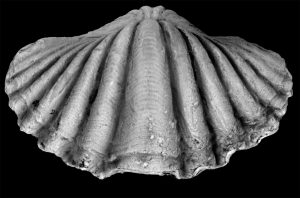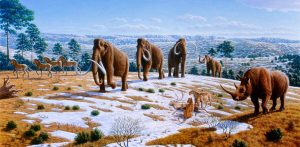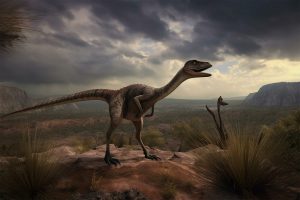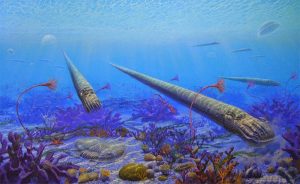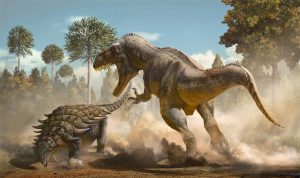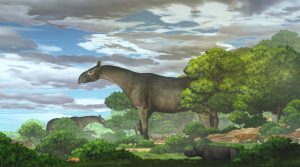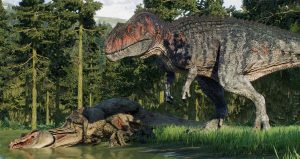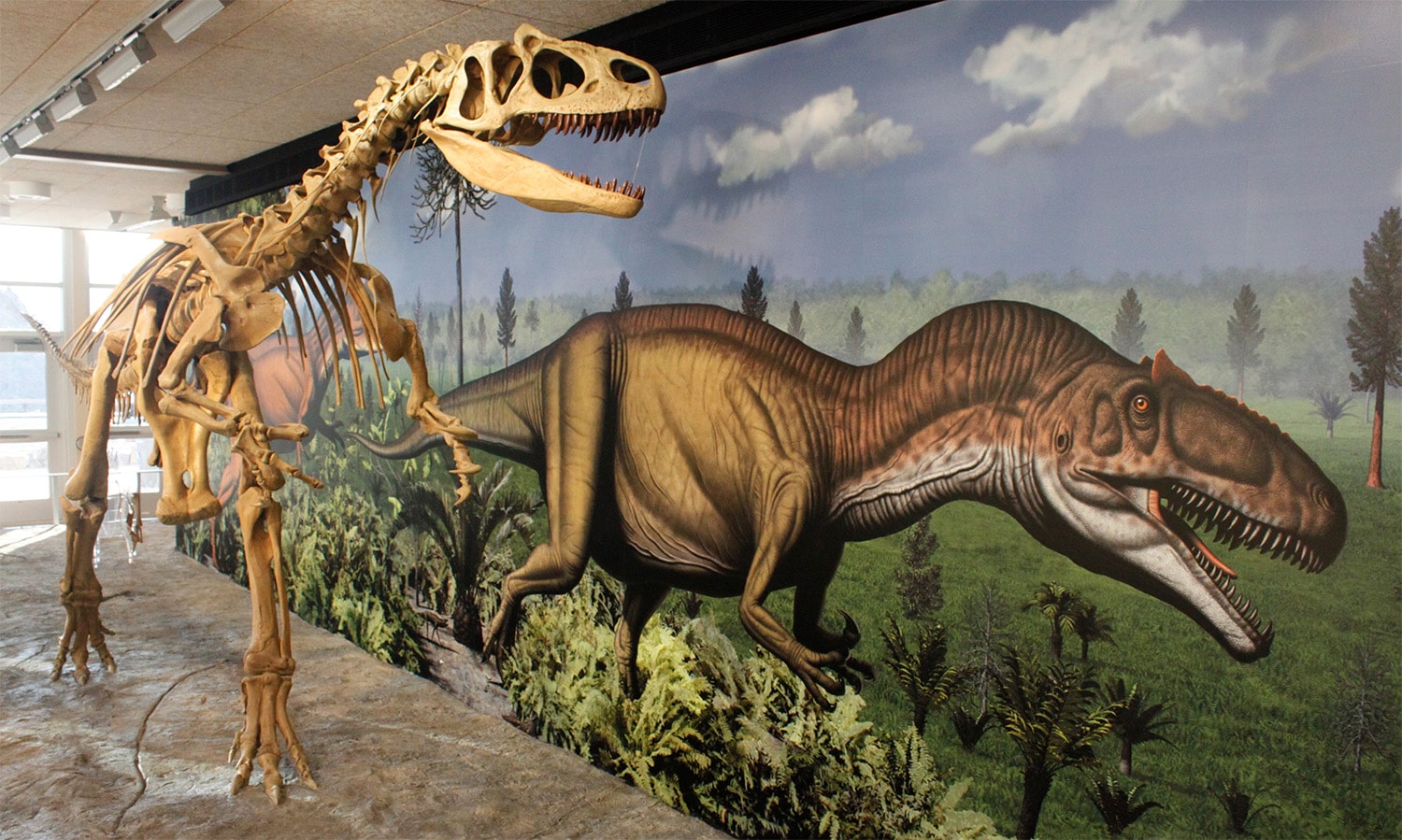
28 interesting facts about Allosaurus
- 👁️ 1197
The Allosaurus, a name that translates to “different lizard,” roamed the Earth during the Late Jurassic period, approximately 150 to 155 million years ago. This formidable predator was one of the most common and well-known dinosaurs in what is now North America, with its fossils also found in parts of Europe and Africa. With a massive body, sharp teeth, and powerful limbs, the Allosaurus was at the top of the food chain in its ecosystem. Despite being discovered in the late 19th century, ongoing research and new discoveries continue to shed light on this fascinating creature, revealing more about its behavior, biology, and environment. Here are 28 interesting and informative facts about the Allosaurus that provide a glimpse into the life of this incredible dinosaur.
- The Allosaurus was first described and named by Othniel Charles Marsh in 1877.
- It is estimated to have grown up to 28 feet (8.5 meters) in length and weighed between 2,200 to 4,400 pounds (1,000 to 2,000 kilograms).
- The Allosaurus had a large skull equipped with dozens of sharp, serrated teeth.
- It walked on two legs, with its massive tail helping to balance its body.
- The forelimbs of the Allosaurus were shorter than its hind limbs but were strong and had three clawed fingers.
- Fossils of Allosaurus have been primarily found in the Morrison Formation, a sedimentary rock formation in the Western United States.
- The Allosaurus is believed to have been a top predator, hunting large herbivorous dinosaurs.
- Some paleontologists suggest that Allosaurus may have hunted in packs to take down larger prey, although this theory is still debated.
- The eyes of Allosaurus were positioned in front of its skull, providing binocular vision and depth perception to better target its prey.
- Allosaurus had a unique joint in its lower jaw that allowed it to open its mouth wide and swallow large chunks of flesh.
- The dinosaur’s brain structure indicates that it had a keen sense of smell.
- Growth rings in Allosaurus bone fossils suggest that it grew rapidly during its juvenile years.
- Evidence of healed injuries on Allosaurus fossils suggests that it engaged in aggressive interactions, either with its prey or other Allosauruses.
- The lifespan of an Allosaurus is estimated to have been around 28 years.
- Allosaurus fossils have been discovered in multiple locations, including Wyoming, Colorado, and Utah in the United States.
- The dinosaur lived in a variety of environments, from semi-arid plains to subtropical forests.
- There are several species within the Allosaurus genus, including Allosaurus fragilis, which is the most well-known.
- The Allosaurus had a distinctive crest above each eye, which may have been used for display or combat.
- It is one of the most popular dinosaurs in pop culture and has been featured in numerous films, documentaries, and books.
- Paleontologists have found evidence of cannibalism in Allosaurus, with bite marks on Allosaurus bones fitting the teeth of their own species.
- The Allosaurus was replaced by larger predators like the Tyrannosaurus rex in the Cretaceous period.
- The Cleveland-Lloyd Dinosaur Quarry in Utah is one of the most significant Allosaurus fossil sites, with over 10,000 bones found, suggesting a possible Allosaurus graveyard.
- Unlike many depictions, the latest research suggests Allosaurus had a more flexible, less upright posture.
- Analysis of Allosaurus skull mechanics shows it could deliver powerful bites, similar to modern-day big cats.
- The Allosaurus is considered the official state fossil of Utah.
- Hatchling Allosaurus fossils are rare, indicating they may have lived in specific nesting areas that are yet to be discovered.
- Some scientists believe that the Allosaurus may have had a covering of feathers or feather-like structures, based on evidence from related species.
- The discovery of an Allosaurus skull in Portugal suggests that this dinosaur had a wider range than previously thought, extending into Europe.
The Allosaurus remains one of the most fascinating dinosaurs studied by paleontologists, offering insights into the complex ecosystems of the Late Jurassic period. Its dominance as a predator, intriguing anatomy, and the mysteries still surrounding its behavior make the Allosaurus a subject of continual study and interest. As new discoveries are made, our understanding of this remarkable dinosaur evolves, highlighting the ever-changing nature of paleontological research. The Allosaurus not only captivates the imagination with its formidable presence but also serves as a window into the past, allowing us to explore the diversity of life that once inhabited our planet.

